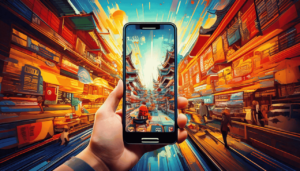iPhone: Two genius marketing tactics you may have missed iPhone: Two genius marketing tactics you may have missed
There is no need to get into the full history of iPhone marketing – most of us have probably heard a lot of it by now in one way or another. But there have been two significant tactics that Apple implemented in their iPhone product strategy over the years that may have been missed in the deluge of PR and buzz…
1. Hijacking the comparative process
We know that the iPhone wasn’t the first smart phone to dominate the marketplace – Blackberry held the title for quite some time through 2000-2010. However, when the iPhone launched in Australia in 2007, it changed the expectations of mobile style, and how a truly smart phone should operate. It blew a hole in the market which opened a superhighway for new phone styles, new players, new functionality, and heightened expectations.
The first six editions of the iPhone hit the market as exclusive individual releases (iPhone, iPhone 3G, iPhone 3GS, iPhone 4, iPhone 4s, and iPhone 5). There was only one version each year for the first six years. That was until 2013 when Apple released the iPhone 5S and iPhone 5C at the same time. This was significant for two reasons:
- It allowed Apple to play in the sub-premium mobile market as well as the premium mobile market;and perhaps more significantly,
- It now provided the shopper with the opportunity to compare an iPhone to an iPhone rather than comparing against a competitor.
The psychology behind the buying process tells us that we make comparisons between products because it removes the likelihood of buyer dissonance, and allows us to feel justified in our purchase, that we have made an informed decision. Up until 2013, shoppers who were in the market for a new phone may have considered buying an iPhone, but if they wanted to go through the comparative process, they will have needed to compare the iPhone to a competing cell phone provider – likely an Android based phone, or perhaps OxygenOS or HTC Sense. This obviously was not ideal for Apple as there was a chance the buyer would choose the competitor (even if history tells us that they won most of those battles).
The release of the iPhone 5S and 5C was Apple’s first multiple-release for the iPhone. It not only allowed Apple to compete at a different price point, it also provided a new playing field where buyers could undertake the process of product comparison by comparing one iPhone to another.
In other words, the buyer could now compare an iPhone to another iPhone rather than a competitor. Regardless of the outcome, it was a victory for Apple in this arena.
2. Price conditioning
At the time of writing (Feb ‘22), the top of the range iPhone retails for AU$2,719. For most people, this is an eye-poppingly mind-blowing price tag for a mobile phone. But Apple’s expectation isn’t that this model will be a market dominator, for the moment.
In 2013, with the release of the iPhone 5S, iPhone broke the AU$1,000 mark for mainstream cell phones for the first time. The only other common mobile device released at a similar price point was the Samsung Galaxy Note 3, though it was positioned as a “phablet” (a phone/tablet hybrid which evidently is now smaller than most flagship phones, and was trying to create a new market).
This was an inconceivable breakthrough at the time: $1,000 for a cell phone? Are you kidding me?!
Three years later, in 2015, seven of the top nine market leading cell phones retailed for upwards of AU$1,000. The shock and discomfort of a thousand-dollar phone had subsided. The new ceiling was around $1,300. $1,300 for a cell phone? Are you kidding me?! A thousand-dollar cell phone will do me just fine…
This is by no means an exclusive Apple tactic, though in the last few years, they have led the way for premium phone pricing.
The purpose here is not to sell an abundance of top-tier models. The intention is to raise what we consider a comfortable threshold for a cell phone budget, so that in the coming years, our tolerance for a higher budget increases.
The marketplace may not be ready to spend $2,700 on a new phone, but in two- or three-years’ time, when the new mobile phone ceiling is upwards of $3,000, perhaps a $2,400 phone or thereabouts may seem like a wise, comfortable cost for a new device. But right now, that price may seem excessive.
—
We know that Apple products across the board are impressive devices. But the precision and sophistication of how they set up a market to be ready for consumption is perhaps the most impressive of all.









